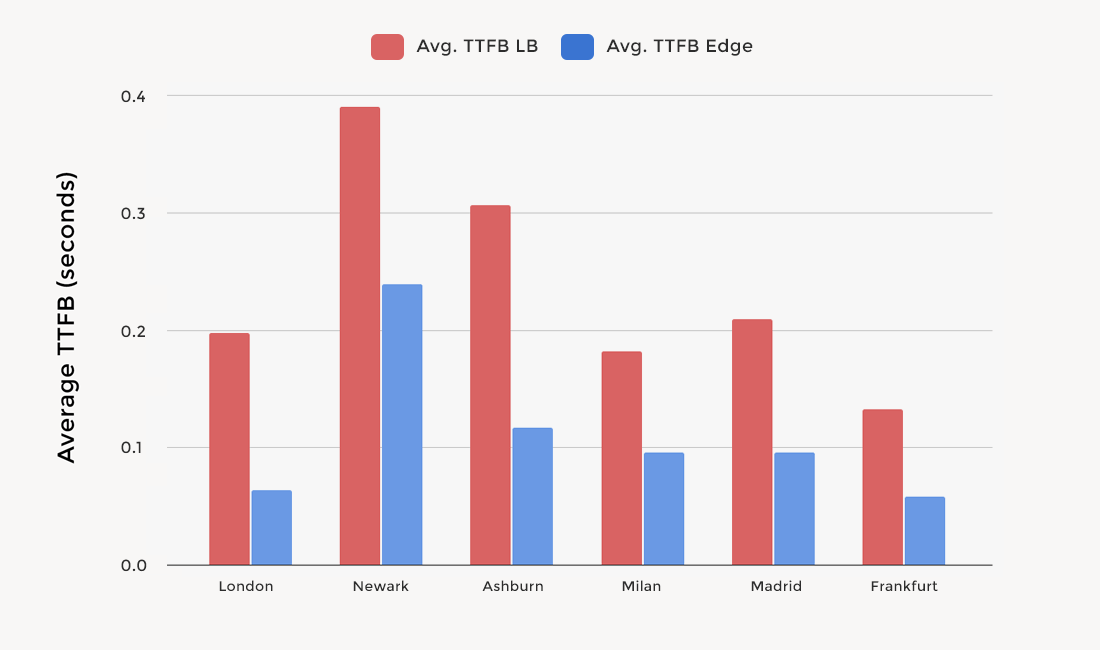
When success turns against you
Remember the early days? That sweet spot where you had a small but loyal roster of clients, each site handcrafted like a piece of art? The caching was tuned perfectly, the security rules were tight, and everything loaded so quickly you caught yourself refreshing just to watch it again. You had time to experiment, to try out a plugin just because it looked fun, to actually drink your coffee while it was still hot.
Then success knocked on your door, and of course you opened it. A happy client told their friend about you. A small brochure site grew into a long-term retainer. A charity you helped with a landing page now wanted you to run their entire campaign site. A WooCommerce store went viral and suddenly expected you to keep their checkout running without a single hiccup.
You said yes because that is what you do.
Fast forward, and you are looking at your portfolio. Ten sites. Fifteen. Thirty and counting.
You are serving clients in every time zone, which sounds glamorous until you realize it also means every time zone can wake you up. That is when you start seeing the weird problems. Logged-in users dropped mid-session. Pages are fast in New York but moving like molasses in Melbourne. Checkouts hanging right as a flash sale is about to close. You could swear the internet is personally trolling you.
And then come the interruptions. You have barely poured your first coffee when Slack pings. “Site is slow, can you check?” You get an email with “URGENT” in all caps (bonus points if the client also calls). Your monitoring tool tells you Frankfurt is down, even though the client’s audience is in Chicago. You open every tool you have, clear caches, poke the CDN, give the WAF a stern talking to, and hope for the best.
The stack you once trusted now feels like that one friend who is amazing at parties but needs constant attention.
The performance tricks that used to work are unreliable. The security setup feels more like a fence you keep patching than a fortress. And the tools that were supposed to make life easier are starting to feel like they’ve unionized against you.
And of course clients do not care if the root cause is a plugin, a server hiccup, or a cosmic ray flipping a bit. In their eyes, it is your fault.
It is exhausting. You started this business with love. To create, to grow, to build something meaningful. But now it feels like you are just the night watchman for a stack that will not sit still.
The hidden tax of growth
No one warns you about this part. Every new site is another detail sneaking onto your to-do list. Your infrastructure becomes a quilt of plugins, rules, and configurations so delicate you are afraid to breathe near it. You remember which client’s WAF cannot be set to strict, which site has the plugin that breaks if you update PHP, and which one uses a CDN that somehow has its own timezone rules.

Soon, this mess creeps into your habits, chipping away at your quality. You start picking plugins not because they are the best, but because they are the least likely to trigger a chain reaction. You delay launches “just to be safe.” You start saying no to certain kinds of work because you know what is coming if you say yes.
And it changes how you feel about the work. You are no longer playing to win; you are playing not to lose. You are still doing your best for clients, but the joy has been replaced with the low-level hum of worry.
You wonder if this is just what scaling an agency means.
Some accept it as the cost of doing business.
Others start to imagine a way out.
Back to the drawing board
In our journey growing Pressidium over the years, watching agencies face this felt like déjà vu. Different people, same problems. We could have built another tool to help you manage it all, but that felt like handing you another plate to spin.
The real question we kept returning to was: why should you have to manage it at all?
It reminded us of spaceflight. For decades, rockets were single-use. You launched them once, then watched them burn up or fall into the ocean. Everyone said that was just the way it was.

Then someone asked, “What if they came back?” and suddenly the impossible became Tuesday.
We wanted to ask the same thing about your stack.
What if speed, security, and resilience were not things you had to bolt on after the fact? What if they were just part of the infrastructure from day one? What if instead of holding it together yourself, you could trust it to hold you up?
So we stripped it down to first principles.
- Latency is physics.
- Attack surfaces grow with every site you add.
- Complexity breaks things.
From there, the answer was clear: serve content from as close to the visitor as possible, stop bad traffic before it touches your server, and build it right into the hosting so you never have to bolt it on.
Building something different
The early versions were… let’s just say “character building.” We tested edge caching in a handful of locations and measured load times across continents. Sometimes it was glorious. Sometimes it was chaos. Sometimes a logged-in dashboard worked perfectly, and sometimes it acted like it had amnesia.
What made the breakthrough was when we began caching dynamic WordPress content directly at the edge. Product pages, dashboards, even logged-in sessions. From that moment on, speed was no longer limited to static assets. The entire WordPress experience felt instant, no matter where users connected from.
We also moved our Web Application Firewall out to the edge of the network, teaching it to recognize everything from sneaky SQL injections to brute force storms that wake you at three in the morning. We tuned it carefully until it could swat away bots without locking out paying customers.
We rebuilt load balancing so outages became ghosts. If one location faltered, traffic slipped instantly to another, never waiting on DNS to catch up.
Bit by bit, it stopped feeling like a patchwork experiment. It started to feel like one intelligent, global system.
And then one day, it simply worked.
➜ Static and dynamic content raced from hundreds of locations.
➜ Attacks were stopped before they touched the origin.
➜ Outages disappeared before anyone noticed.
No extra dashboards.
No plugin roulette.
No juggling.
Just the system, holding itself together.
What it feels like when Pressidium EDGE works
The best part is that when Edge works, you barely notice it. You go days without an urgent ping. Campaigns launch without someone hovering over analytics. Logged-in users get fast dashboards no matter where they are.
A month in, you realize the speed tickets and the late-night “help” messages are gone.
You get to pick plugins based on what is best for the project, not what is least likely to break.
You start saying “yes” more.
You even – and this might shock you – get to drink your coffee while it is still hot.
Your stack stops being the enemy. It becomes the teammate that quietly makes you look good.
Because this was never about adding another shiny feature, it was about giving you the kind of foundation reusable rockets gave spaceflight. Something you can use again and again without worrying if it will survive the trip.
Growth should be exciting, not exhausting.
And when the infrastructure grows with you, it stays that way.
Ready to feel that shift for yourself?
If you have ever wanted to grow your agency without the stress growing with it, now is the time.
We have seen agencies stuck in firefighting mode make the switch, and it changes everything. We put that vision to the test, measuring performance and reliability across real-world agency workloads. The performance uplift moving from the former advanced load balancing(LB) setup to Pressidium EDGE is dramatic:
➡ Global acceleration, proven in data
Edge delivers static and dynamic content up to 4.7x faster, reducing TTFB so your clients’ sites feel instant from the very first click. For agencies, that difference is transformative, especially when speed usually stops at static assets.
Time to First Byte (TTFB) is how long it takes for a visitor’s browser to get the first response from your server. It’s the moment a page starts loading, making it one of the clearest signals of speed.

As the chart shows, Edge consistently cuts average TTFB across global locations. And while the global averages are impressive, the story gets even better at the closest edge locations, where response times drop under 100ms. This means your clients’ sites feel instant everywhere, keeping Core Web Vitals healthy and SEO strong.
➡ WordPress-tuned security at the edge
Edge WAF inspects and blocks threats before they ever hit your origin. Besides well-known critical security risks, these threats include brute-force login attempts, bots, large-scale floods, and WordPress-specific exploits. You can set custom rules when needed, while our DevOps team continuously updates protections in the background. This means your client sites stay secure and your team spends less time firefighting.
➡ Resilient uptime, even under pressure
By combining global acceleration with WordPress-tuned security, Edge keeps your clients’ sites stable and available even under pressure. Traffic spikes and attacks that once caused late-night emergencies are absorbed quietly in the background, so the team can stay focused on the work that matters.
➡ Unified management, no bolt-ons
Forget juggling CDNs, WAF services, and caching plugins. Edge is built into the Pressidium platform. Purge caches, tune rules, and review blocked threats from a single dashboard without fragmented workflows or vendor conflicts.
➡ Granular control without risk
Fine-tune caching and security without risk. Use built-in tools that help you exclude carts or dashboards from cache while everything else stays lightning fast, block traffic from specific regions, or apply custom WAF rules for high-risk sites. It’s the control agencies need across diverse portfolios without the stress or the guesswork.
Your clients just see faster, safer, always-on sites.
You see fewer emergencies, cleaner workflows, and weekends that belong to you again.
If you are already a Pressidium customer, activating Edge is as easy as updating your DNS. If you are new here, you can start a free trial and find out what it feels like when your stack has your back.
Want to see how Edge fits into your agency’s workflow? Connect with us and explore how we partner with teams like yours.
You’ve done the hard work of growing your agency. Let Pressidium EDGE carry the weight.
Start Your 14 Day Free Trial
Try our award winning WordPress Hosting!


















